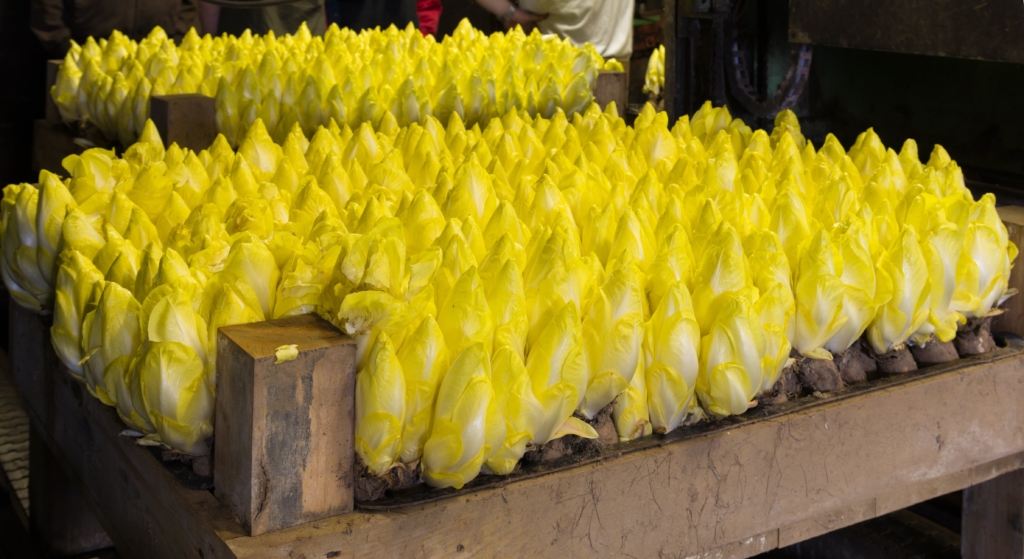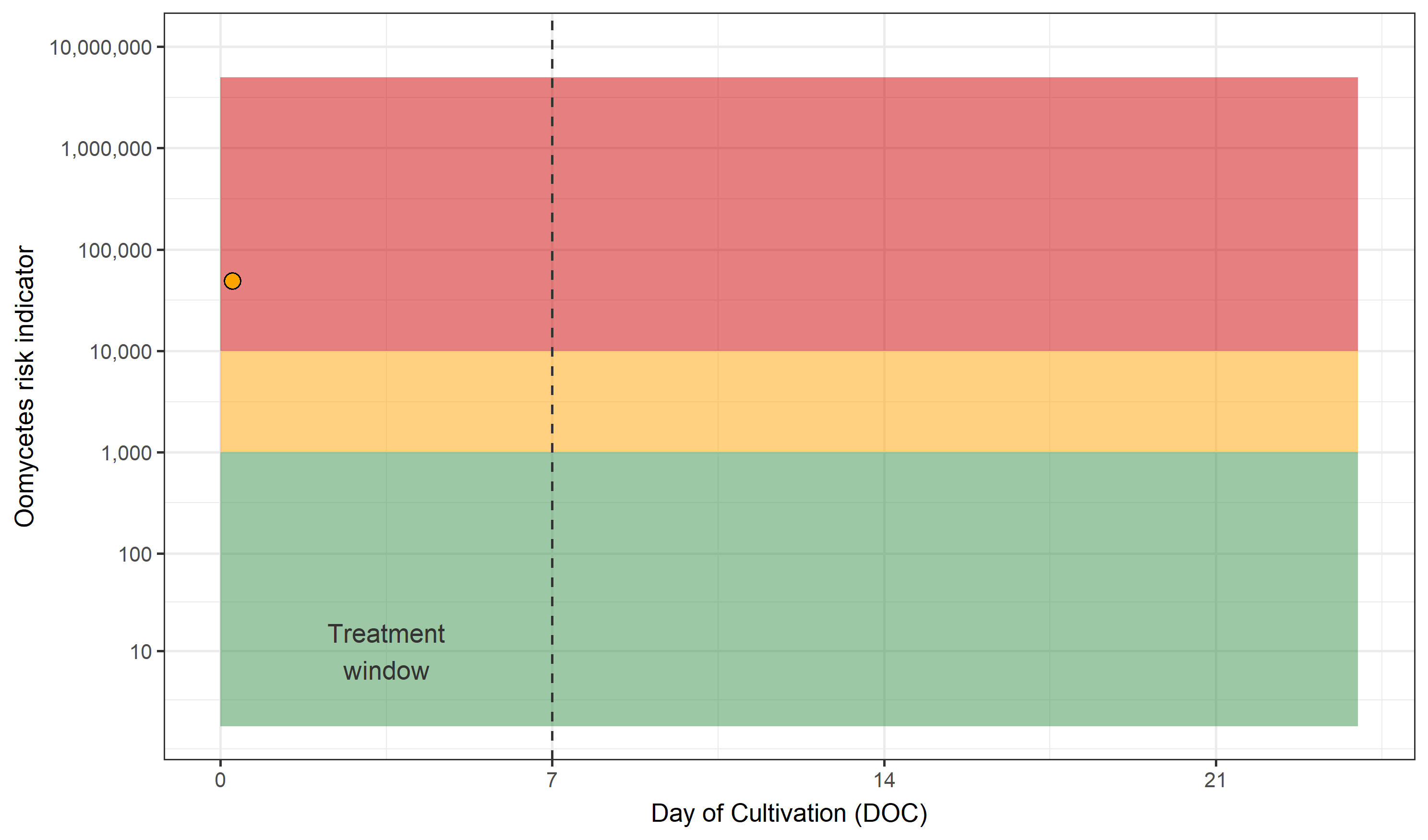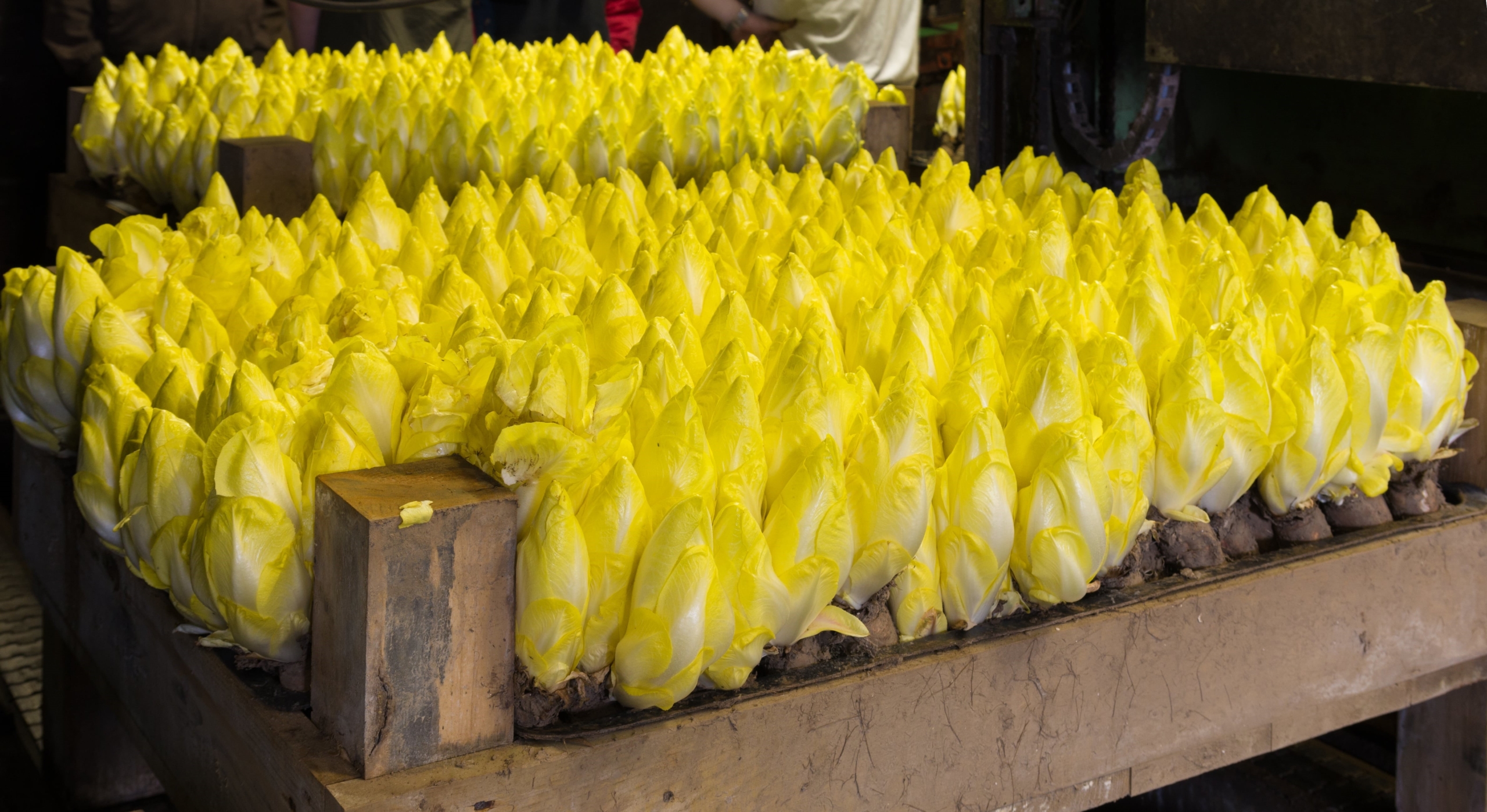KYTOS toolbox Expanded with Oomycetes Detection Algorithm

Chicory: a Unique Crop Cultivation
Chicory (“witloof“) is a traditional Belgian vegetable, which, unlike most other vegetables, has to be grown twice. The chicory is sown in regular soil to allow the development of roots. The roots are then harvested from the field and planted in trays, stacked vertically in large, dark storehouses. Recirculating water circuits across the trays distribute nutrient solutions to the crops, making them highly susceptible to diseases.
Oomycetes Plague the Horticulture Industry
Oomycetes are a group of fungus-like microorganisms that include a wide range of pathogens. They are among the most problematic groups of disease-causing organisms in both agri- and aquaculture. Some of the most damaging diseases include potato late blight (“aardappelziekte“), downy mildew (“valse meeldauw“), and root rot (“wortelrot“).

New KYTOS offering Helps to Take Immediate Action Against Oomycetes
With crop losses of billions of dollars annually, these diseases pose a large threat for global food security. The genera Pythium and Phytophthora affect a wide range of crops and are difficult to treat and get rid of. During their life cycle, oomycetes produce spores which can spread the disease quickly. This spread is amplified in hydroponic installations though intensive water recirculation.
We are happy to announce:
- A novel Oomycetes detection algorithm has been added to our growing KYTOS toolbox.
- KYTOS services can now empower horticulture companies even more to take targeted and timely management strategy for their water system.
- Routine microbiome health surveillance is key to assessing root rot risks for each batch.
KYTOS Partners up with Innovators
Primalof, an innovative Flemish company, is specialized in the hydroponic cultivation of chicory. Primalof is working with Praktijkpunt Landbouw Vlaams-Brabant to optimize their water reuse, in order to further improve on the environmental friendliness of their production processes. To help assess their water treatment and guarantee microbial water quality, our microbiome health service was used, which included our latest KYTOS algorithm for the detection and risk assessment of oomycetes spores.
We are looking at applying ultrafiltration to make this water reuse safer. A quick and accurate analysis of the water quality is essential for our trial.
Yannah Cornelis, Researcher at Praktijkpunt Landbouw
Novel Oomycetes insights revealed by KYTOS algorithms
We put our latest KYTOS algorithm for the detection and quantification of oomycetes spores to the test. As usual, we found some very exciting things:
- The abundance of zoospores was quantified and the water treatment efficacy could be tracked for each batch.
- Water preparation is key. Oomycetes spores are seeded primarily at the start of the cultivation.
- Treatments took 5 – 7 days to take significant effect.
- Our precise zoospore quantification demonstrated that oomycetes remained highly abundant for several days.

Are you also seeking to:
- Minimize disease risk
- Improve water quality
- Foster more stable production conditions
- Promote and control microbial health


One Comment
Comments are closed.